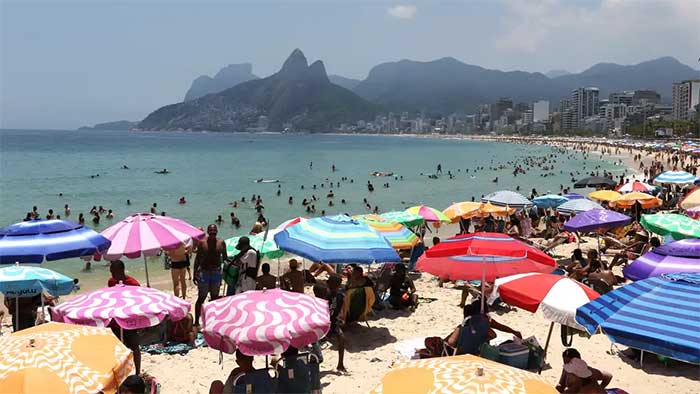At 0:27 am this Friday (22), when the season began throughout the Southern Hemisphere. After a year marked by atypical heat waves, the forecast is for temperatures above the historical average, according to a climate report produced by the National Institute of Meteorology (Inmet), in partnership with the National Institute for Space Research (Commit).
Normally, summer in the country is marked by rising temperatures, days that are longer than nights, heavy rains, electrical discharges and winds of moderate to strong intensity. Due to the El Niño phenomenon, which alters the distribution of water temperatures in the Pacific Ocean, changes in climate are expected to be more intense. In Brazil, the effects of El Niño could last throughout the season, which ends on March 20, 2024.
Between the months of January and March, the Northern Region of the country can register heat with values 1ºC above the historical average. In relation to rainfall, the states of Acre, Roraima, Amapá and the southwest of Amazonas should have volumes close to or above average in the quarter. Other regions are expected to continue facing a period of drought. This is the case for most of Amazonas, Pará, Rondônia and Tocantins.
The Northeast Region also has an expectation of above-average temperatures, mainly in the states of Maranhão, Piauí and the north of Bahia. Rain is forecast close to or below climatology in the central-north of the region. In the center-south, due to the warmer water pattern of the South Atlantic, more voluminous rains may occur.
In the Central-West, the trend is for strong heat in all states, with values above 1ºC of the historical average. Rain close to or above average is also expected in practically the entire region, except in the west of Mato Grosso, which should have a volume slightly below the quarter’s climatology.
In the Southeast Region, temperatures are expected to be high in all states, with forecast values above 0.5ºC above average. The expectation is that there will be a greater volume of rain, especially in Minas Gerais, where it may be more frequent and more intense.
In the South, heat close to or slightly above normal is expected in Paraná, Santa Catarina and the north of Rio Grande do Sul. In other areas of the latter state, the possibility of values at or below the average. The rains should be more intense in Rio Grande do Sul, especially in the southern part of the state. In other areas of the region, there will be irregular rains, with totals close to or slightly below average.
Impacts on the harvest
Inmet draws attention to the impacts of El Niño on the 2023/24 summer harvest. In the states of Maranhão, Tocantins, Piauí and Bahia, rainfall was below average in October and November. Therefore, soil water levels are very low, which does not favor the initial stages of summer crops. The forecast is that levels will remain low in the coming months, with water deficit and increased evapotranspiration due to high temperatures.
In Central Brazil, there was an increase in water levels in the soil in some areas, due to the return of rain in the second half of December. With the exception of the north of Minas Gerais, the scenario was favorable for the resumption of planting to develop first-crop crops.
For the South Region, the predicted rainfall volumes should keep water levels in the soil high. But the probability of a water surplus is lower in some locations. With the decrease in rainfall compared to previous months, the expectation is to resume the sowing of first-crop crops in regions that are behind schedule.






